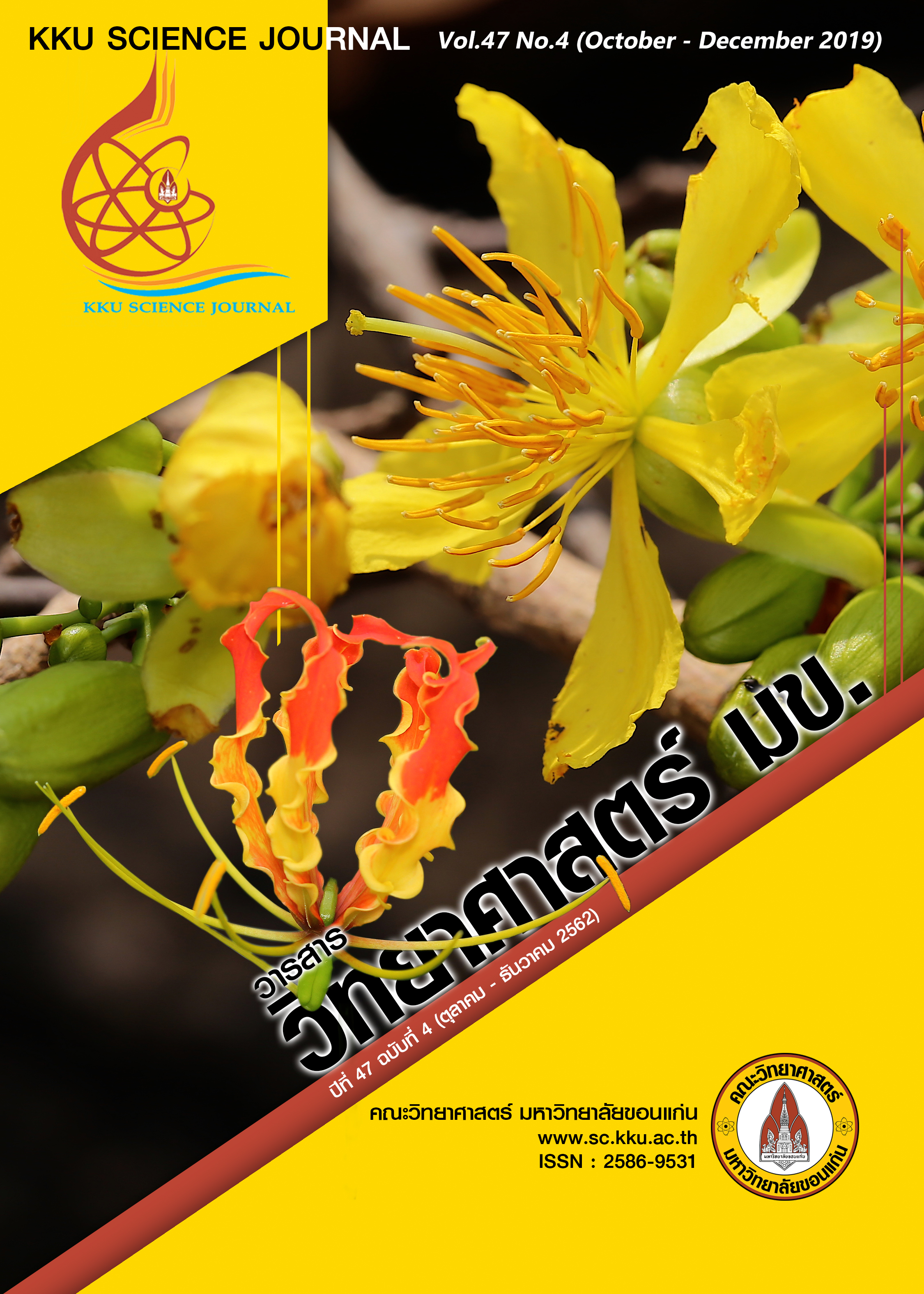Antioxidant and α-Glucosidase Inhibitory Activities of Leaf Extracts from Phlogacanthus pulcherrimus T. Anderson
Main Article Content
Abstract
This study was aimed to determined antioxidant and α-glucosidase inhibitory activities of leaf extracts from Phlogacanthus pulcherrimus T. Anderson. The extracts were prepared by using different solvents (50% ethanol (PPHE), 80% ethanol (PPE) and water extracts using water bath (PPWB) and sonicator bath (PPSO), to enhance solubility. The results revealed that PPHE had the highest total phenolic and total flavonoid contents of 16.36±0.45 mg gallic acid equivalence /gram Extract and 10.82±0.54 mg quercetin equivalence / gram Extract, respectively. PPHE also showed the highest antioxidant capacity by ABTS assay with IC50 = 0.63±0.04 mg/mL. PPE had the highest antioxidant capacity by FRAP and DPPH assay with FRAP values of 23.61±0.54 mg Trolox equivalence /gram Extract and and IC50 = 4.60±0.20 mg/mL, respectively. However, its free radical scavenging activity was less than the standard controls, ascorbic acid and Trolox. According to the α-glucosidase inhibitory activity study, the aqueous extracts; PPSO and PPWB exerted more potent activity to inhibit α-glucosidase emzyme with IC50 = 0.24±0.00 and 0.32±0.08 mg/mL, respectively compared to standard control, acarbose (1.05±0.11 mg/mL). These results indicate that the ethanolic extracts; 50% ethanol (PPHE) and 80% ethanol (PPE) possess the highest effect on antioxidant activity. The aqueous extract using sonicator bath provided the most potent inhibiotory activity to against α-glucosidase enzyme. For the effectiveness and safety application of the extracts, further investigation on their chemical constituents, active compounds, mechanisms of action on hypoglycemic activity, and toxiciological study should be carried out for further development to anti-diabetic drug
Article Details

This work is licensed under a Creative Commons Attribution-NonCommercial-NoDerivatives 4.0 International License.


